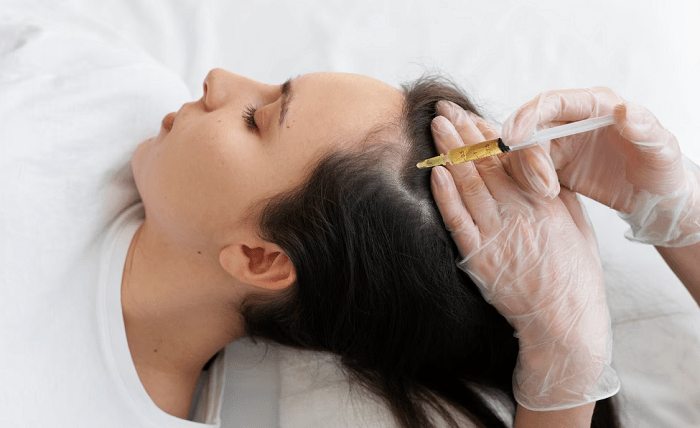There are some considerations to be mindful of when showering after receiving scalp micropigmentation. This style of micropigmentation has gained increasing popularity as a hair loss solution. The aftercare of the procedure requires recipients to be conscious about how moisture comes into contact with newly-pigmented skin, including in the shower. Here are some of the things micropigmentation clients should remember when showering after treatment:
Scalp micropigmentation is a non-invasive treatment that offers a solution to hair loss. Professionals in Scalp Micropigmentation require a steady hand and precise attention to detail, skills honed through specialized training programs.
Intro to Scalp Micropigmentation
Scalp micropigmentation (SMP) is a non-surgical hair loss treatment that involves placing tiny dots of pigment into the scalp, replicating the appearance of a close-shaven head. The treatment uses different shades and densities of pigmentation to look like natural hair follicles. Part of its popularity comes from how well it can function to cover hair loss due to causes ranging from genetics to alopecia, to chemotherapy. It can also be used to conceal scars or to complement beard growth.
SMP results are immediate, and the treatment can last for several years with proper care. It is a versatile treatment that can work for various stages of hair loss, from receding hairlines to severe thinning. It is excellent for men and women of various ages and complexions. The procedure is usually done in multiple sessions, with the number of sessions depending on the individual’s hair loss extent.
The field of Scalp Micropigmentation provides a strategic cosmetic option for individuals facing hair thinning or loss. This non-invasive procedure requires precision, creating the appearance of hair follicles for a natural-looking hairline.
Micropigmentation also requires minimal maintenance, unlike other hair loss treatments that require frequent maintenance visits and costly hair products. SMP can be used to supplement other hair loss solutions; the natural-looking results blend seamlessly with real hair.
Another advantage of scalp micropigmentation is the natural-looking results. The artists providing treatment will work with the client to create a custom hairline and match the color of the pigments to the client’s hair color, resulting in a smooth transition from the pigmented scalp to the natural hairline.
Micropigmentation Aftercare and Showering
One of the advantages of SMP is that it requires relatively little recovery after receiving it. After treatment, clients can typically carry on with their day as normal. Other than redness on the scalp, there should be little in the way of after-effects. A common area of aftercare concern is showering and bathing. After receiving SMP, clients can comfortably shower as needed. Clients should avoid scrubbing, shampooing, or shaving the affected area for a few days after treatment. Light cleaning will be enough to keep the scalp healthy as the scalp recovers and the micropigmentation fully sets.
Avoid Sweating
To help the SMP take hold, the artist providing treatment will apply a protective coating on the scalp to prevent water from reaching the pigments. To avoid the need for the kind of intense washing that might affect your SMP, it is recommended that clients minimize strenuous or dirt-accumulating activities. Sweat-inducing workouts should be avoided for several days after treatment.
Avoid Swimming
Activities like swimming pools, tanning beds, or saunas also should not be used during the first four weeks after treatment. Reducing or eliminating these activities protects the pigment from being exposed to chemicals that might affect it before it settles.
Avoid Sun Exposure
Avoid exposing the scalp to direct sunlight in the days immediately after the treatment. Sun exposure can lead to irritation on the scalp as well as sweating, which may displace pigmentation. Wearing a hat to shield the scalp from direct sunlight can be a helpful practice.
Avoid Harsh Scrubbing
After several days have passed, patients can start showering their scalp again, though it is good practice to be gentle. Vigorous scrubbing of the scalp can cause the pigments to fade away faster than they should. When washing the scalp, choose mild or gentle shampoos to avoid irritation to the scalp or pigments. Use lukewarm water and avoid hot water, as it can also cause the pigments to fade faster. The ideal way to wash the scalp is to use the fingers to apply shampoo gently and avoid using a sponge or brush.
Protect Your SMP When Showering
While SMP is a permanent solution, its long-term effectiveness is helped by good aftercare hygiene. Clients can safely shower after an SMP session but should carefully adhere to any artist’s guidance. Water contact with the micropigmentation should be minimized as directed to allow the pigments to settle in the skin, followed by gentle washing with mild soaps or shampoos. SMP treatments can make a dramatic difference for a changing hairline or noticeable scar, and following these guidelines can help you get the most out of treatment. Contact a local micropigmentation clinic to learn more about the treatment, aftercare, and showering with SMP.



